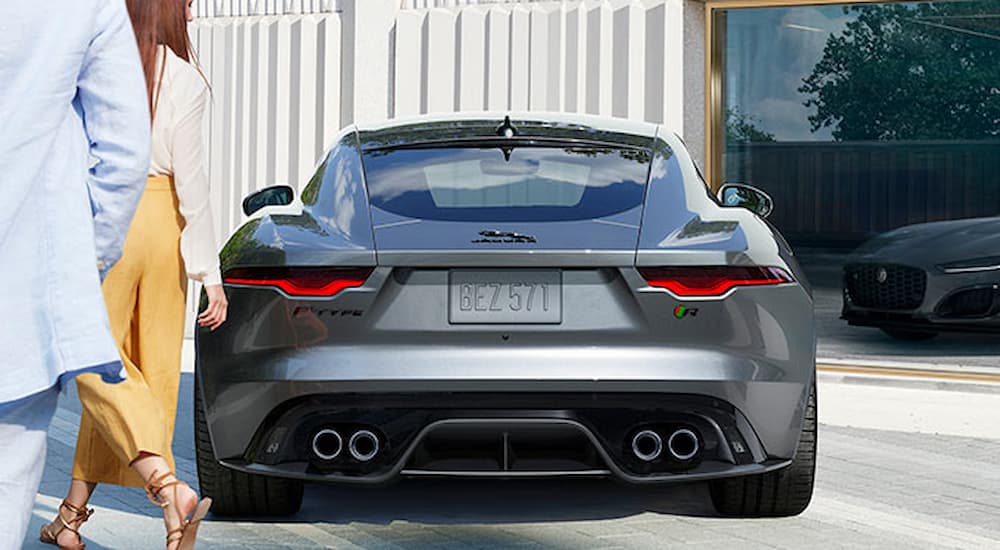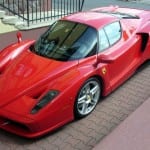When you ask mechanics about Jaguar, you’ll find polarizing responses. Some argue that Jaguar is one of the most acclaimed automotive brands in the industry. Others, many of whom have spent hours working on Jags in their engine bays, will tell you that the only reason the British don’t manufacture televisions is that they can’t figure out a way to make them leak oil. To these mechanics, Jaguars and its sister brand, Land Rover, are oil-leaking hazards that hide their issues behind their crown of opulence.
Here’s the thing, though: modern Jaguars may leak oil, but it’s difficult to argue with the automaker’s contributions to the industry and their global reputation. Models like the 1937 SS Jaguar 2 ½-liter sedan introduced the world to a four-door sedan for the first time. Then, there are icons like the legendary Jaguar D-Type that took the title at Le Mans in 1956 and just sold for $21.8 million. So, what’s the enticement of the Jaguar name? I’d call it exclusivity, and after looking at Jaguar’s most expensive, fastest, oldest, and most innovative models, you’ll see why.
Most Expensive: 1956 Jaguar D-Type
Following the success of the C-Type, Jaguar spent 18 months designing its successor. Finally, the D-Type made its official debut in 1954 as one of the first vehicles built on a unibody platform. The platform gave the D-Type its lower sitting position and shorter body, making it the most beautiful racecar at the time. Even more impressive was that the D-Type didn’t just look the part; it was incredibly fast.
Powered by a 3.4-liter six-cylinder engine, the D-Type reached a top speed of 172 mph, an impressive feat for the 1950s. This exceptional capability earned it a place on the starting line of the 24 Hours of Le Mans race, where it won three years in a row. Among these wins, its greatest success came in 1957 when it took home five of the top six places, including first, second, and third.
This legendary history is why someone paid $21.8 million for the 1956 D-Type at the RM Sotheby automotive auction in California in May 2022. Following its win at Le Mans in 1956, the D-Type was retired and purchased by a Scotsman a year later. It was then sold to a Scottish businessman in 1970, who spent years restoring it to its original condition. Finally, in 1999, it was purchased by an American collector who paid roughly $2.74 million for the model. While vehicles tend to depreciate, the 1956 D-Type has done the opposite, increasing its worth significantly thanks to its heritage.
Oldest Icon: 1935 SS 90 Prototype
Years before the D-Type hit the road, Jaguar debuted its first sports car in 1935. Known as the SS 90 Prototype, the sports car doesn’t officially bear the Jaguar name because the company was still known as Swallow Sidecar. It would be another decade before William Lyons rebranded the company as we know it today.
So, what was so special about the SS 90 Prototype? First, the car is stunning from every angle with its bold design and sculpted lines drawing the eye from the front to the rear. Under the hood, its 2.6-liter straight-six engine pushed it to a top speed of 90 MPH, making it one of the fastest cars of the era, alongside speedsters like the Alfa Romeo 6C 1750.
Despite its speed and stunning design, Jaguar only produced 23 SS 90 Prototypes. The model was quickly replaced with the SS 100, but the SS 90’s exclusivity earned it a prominent place among collectors. Today, one model remains in pristine condition despite being driven daily throughout World War II and in the years following. By the 1960s, it finally landed in a collector’s garage and spent several decades being refurbished before an Arizona collector and Jaguar expert purchased it. Restoring it further, the Arizona man sold it in 2002 to a Swiss collector who continues to drive it as part of a world-renowned collection.
Fastest Ever Made: 1992 XJ220
The debut of the Porsche 959 in the 1980s put Jaguar on a new trajectory without the automaker fully realizing it. What do I mean? Jim Randle, Jaguar’s engineering director at the time, knew the company needed something big and set out with a small group of friends known as “The Saturday Club” to design a Jaguar that would give the Porsche 959 a run for its money. The goal was to deliver a supercar that wasn’t lavish or expensive to produce.
After a decade, Randle and The Saturday Club saw their hard work pay off. The XJ220 concept car made its official debut at the 1988 British International Motor Show, where enthusiasts couldn’t contain their excitement over the supercar’s V12 engine. This enthusiasm forced Jaguar to put the XJ220 into limited production.
However, Randle and his team weren’t out of the woods yet. Emissions standards and engineering issues made the V12 impossible, which caused significant concern since the engine was the very thing that enticed drivers. Nevertheless, Randle held firm that the XJ220 needed a powerhouse, ultimately replacing the V12 with a turbocharged V6. Taken from the Rover Metro 6R4 rally car, the twin-turbo V6 delivered more horsepower to the tune of 550 ponies, making the XJ220 the fastest sports car of the era with a top speed of 217 MPH. Today, the XJ220 remains one of the fastest supercars in Jaguar history.
Most Innovative: Project Vector
Jaguar made history when it introduced the first-ever four-door sedan in the late 1930s. Today, Jaguar’s ingenuity is on an entirely different level with Destination Zero and Project Vector. Destination Zero is Jaguar’s mission to build a cleaner, safer, and healthier future with a new lineup of vehicles that promise zero emissions, zero congestion, and zero accidents. Project Vector is an integral part of the mission, ushering the Jaguar lineup and the rest of the world into a bold future.
Project Vector is a revolutionary concept car that measures just over 13 feet in length, making it ideal for urban dwellers. The compact vehicle is all-electric and looks forward to a world where semi-autonomous or hands-on driving is replaced by hands-free driving with minimal need for driver engagement. With that being said, the concept comes with a driver’s seat, steering wheel, and pedals, but its platform positions the drivetrain components and battery beneath the floor.
Project Vector’s layout allows for more functional space and flexibility. The cabin offers unparalleled room and configurations for passengers and cargo, a telltale sign of what Jaguar intends for its future. The automaker envisions connecting the concept car to public transit networks, giving individuals access to on-demand travel and spaces they can share.
What’s in the Jaguar Name?
I’ve never owned or driven a Jaguar, so I can’t tell you how they handle, how luxurious they are, or if they consistently leak oil. However, I know that I’m seeing something remarkable on the rare chance I spot one driving around town. How is this even possible coming from inexperience? It goes back to my original point–Jaguar is all about exclusivity.
When you look at the most expensive Jaguar, the oldest, fastest, and most innovative, you see a common theme. Jaguar has the acute ability to deliver something out of reach for the masses, but that nevertheless makes us all want to experience it even more. Limited production runs are certainly a great help with this, but so is Jaguar’s innovation. We see this from the late 1930s with the first four-door sedan to Jaguar’s plans for the future with Project Vector. This combination of innovation and exclusivity earns Jaguar a prominent jewel in the crown of the global automotive industry. And if you ask me, it’s well deserved, oil leaks and all.




